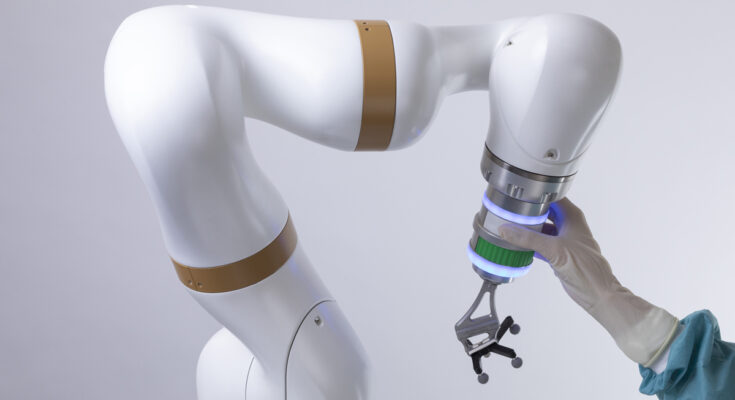Patient safety has always been the cornerstone of spinal surgery. Every choice in the operating room focuses on minimizing risks while achieving lasting stability. Robotics adds a new dimension to this mission, providing surgeons with tools that enhance accuracy and reduce complications. Dr. Larry Davidson, a board-certified neurosurgeon, with fellowship training in complex spinal surgery, emphasizes that robotics is not just about precision, it is about protecting patients, lowering the likelihood of infection, errors and instability.
By combining preoperative planning with intraoperative navigation, robotic systems help translate surgical strategy into precise, consistent execution. This integration supports lower complication rates, stronger spinal stability, and safer recoveries for patients of all ages and conditions.
The Link Between Precision and Safety
Spinal surgery requires accuracy measured in millimeters. A misplaced screw or rod can compromise stability or injure nerves and blood vessels. Robotics reduces these risks by guiding instruments according to detailed 3D imaging and preplanned trajectories. This level of precision is key to patient safety. By minimizing guesswork and variability, robotics helps hardware placement remain both effective and reliable, reducing the risk of preventable complications.
Lower Complication Rates
Studies have shown that robotic-assisted surgeries have fewer revisions, compared with traditional approaches. Each avoided revision represents not only cost savings, but also protection for the patient from additional anesthesia, blood loss and recovery. Robotics offers added confidence in complex cases, with each step designed to prioritize patient safety.
Dr. Larry Davidson remarks, “Combining advanced robotic tools with surgical expertise elevates patient care, by making procedures safer and recovery more manageable.” It reinforces the idea that robotics is not just about technical precision, but about safeguarding patients through every stage of surgery and recovery.
Reducing Infection Risks
Infection is one of the most concerning complications after spinal surgery. Robotic assistance reduces this risk by supporting minimally invasive techniques, which require smaller incisions and less tissue disruption. Smaller incisions lower exposure to contaminants and reduce healing times, both of which decrease infection rates.
Robotics also shortens operative time by streamlining screw placement and alignment. Shorter surgeries mean less time under anesthesia and less opportunity for bacterial exposure in the operating room, which combine to create safer outcomes for patients.
Improved Stability Through Accuracy
The long-term safety of spinal surgery depends on stability. Accurately placed hardware provides stronger fixation, improves fusion rates and reduces the risk of loosening or failure. Robotics guides screws and rods along optimal paths, improving fixation even in osteoporotic or fragile bone. For patients, this reduces complications from instability and supports a more confident, smoother recovery.
Safety in Complex Cases
Complex spinal cases, including deformities and multi-level repairs, present higher risks because of their technical complexity and length. Robotics enhances safety by providing consistent accuracy across multiple vertebrae. By guiding each screw and rod according to the surgical plan, robotics minimizes variability that could affect outcomes in long constructs. In fracture cases with distorted anatomy, robotics offers clear guidance, where traditional landmarks may be unreliable, improving safety in situations that were once high-risk.
Athletes and Safety Benefits
Athletes recovering from spinal injuries face intense pressure to return to play quickly. Safety is paramount for this group, as complications could end careers. Robotics provides the accuracy and stability needed to protect performance goals, without compromising long-term health. Smaller incisions, reduced pain and quicker discharges allow athletes to begin rehabilitation sooner. By reducing the risk of complications, robotics helps make recoveries safer and more efficient.
Training Teams in Safety Protocols
Robotics enhance patient safety when care teams are fully trained in their use. Surgeons, nurses and anesthesiologists work together to integrate robotic guidance into every step of the procedure. Simulation labs and mentorship programs help prepare younger surgeons to apply robotics responsibly. While technology contributes to safer procedures, clinical judgment and clear communication remain central to protecting patients.
Efficiency and Safety
Safety and efficiency are closely linked. Long surgeries increase risks of blood loss, infection and anesthesia complications. Robotics improves efficiency by reducing trial-and-error in screw placement and shortening operative time. For patients, this means smoother recoveries with fewer setbacks. For hospitals, it translates into reduced costs and stronger resource utilization, further strengthening the case for robotic adoption.
Advances in Safety Technology
The future of robotics points to even stronger safety capabilities. AI integration could enable systems to detect risks in real time, alerting surgeons before potential errors. Advanced imaging will provide continuous updates as the spine shifts during surgery, maintaining accuracy throughout. Smaller, more versatile robots may make these benefits available in more hospitals, extending patient protection. These innovations will further cement robotics as a key element in safe spinal surgery.
Patients as Partners in Safety
Patient education is an important part of safety. When patients understand how robotics reduces risks and improves outcomes, they feel more confident in their care. Informed patients are more likely to participate actively in rehabilitation and follow-up instructions, further reducing complication risks. By framing robotics as a safety tool that supports, not replaces, surgeons, providers strengthen trust and reinforce the patient-surgeon partnership.
Robotics will continue to play an expanding role in supporting safety in spinal surgery. As systems grow more advanced and accessible, their impact on reducing complications, controlling infections and enhancing stability will only increase. This progress points toward a future where spinal procedures are not only safer but also more reliable, setting a new standard of care in surgical innovation.
Robotics enhances patient safety in spinal surgery by reducing complication rates, lowering infection risks and improving long-term stability. These advantages make procedures not only more precise, but also more predictable and protective. The true value of robotics lies in its ability to safeguard patients, underscoring that in spine surgery, success is defined not only by technical precision, but also by the confidence and security it provides for every patient.




